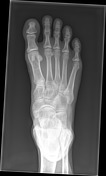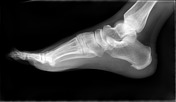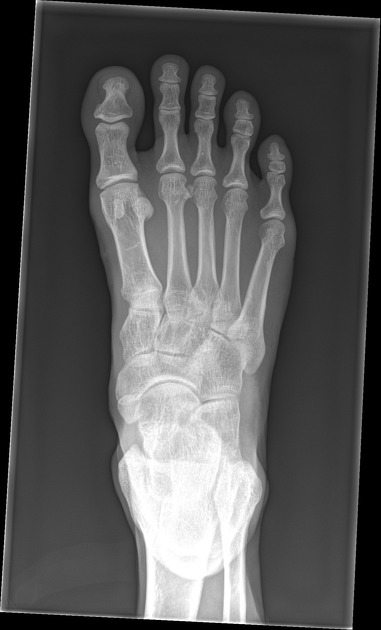Presentation
Foot pain.
Patient Data
Age: 50
Gender: Male
From the case:
Os intermetatarseum



Download
Info

No acute fracture identified. No focal osseous lesion. No advanced degenerative change. Small plantar calcaneal spur. Alignment within normal limits. Accessory ossicle between the 2nd and 3rd metatarsal heads. Os supranaviculare.
Case Discussion
The os intermetatarseum is typically positioned dorsally between the bases of the first and second metatarsals but has been reported to occur near the metatarsal heads or between the fourth and fifth metatarsal bases.




 Unable to process the form. Check for errors and try again.
Unable to process the form. Check for errors and try again.